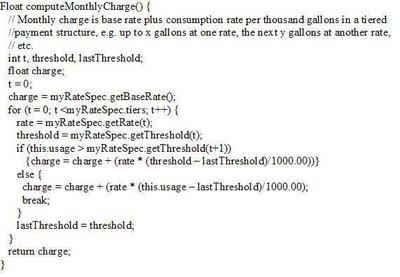Inspired by the TV show Starved, which chronicles the lives of friends with eating disorders who attend meetings with other food-challenged folks (where inappropriate behavior is censored with the chant, “it’s not OK”), I imagine a support group for software agilists gone astray…
“Hi, I’m Dave and I don’t like to pair program. If I spend a few quiet hours alone before everyone shows up, I can get a whole lot more done.”
“Dave, it’s not OK.”
“Hi, I’m Beth and I prefer to sketch out my design before I write any code.”
“Beth, it’s not OK.”
“Hi, I’m Rick and I plan the work for my team and then show them my plan.”
“Rick, it’s not OK.”
Or is it?
I recoil from absolutes. The chant “It’s not OK” grates against my core values. Sure sometimes behaviors may be inappropriate, but there’s got to be a better way to address the issue. Imagine another world….
“Dave, you don’t like pair programming. I want our team to really try pairing. Maybe as a group we should tone down all our chatter. It can get pretty loud sometimes and that makes it hard to focus. If you really don’t think pairing is going to work for you, you can still be agile—but you might find it more to your style to work on the mark project. They’re writing unit tests, doing daily builds and have short iterations, but they’re not following all XP practices. One thing the mark team insists on instead of paired programming is to have paired checkins for all new modules and any changes close to the end of an iteration.”
“Beth, I like that you know UML and use it effectively. When you do draw design ideas everyone seems to understand thing better. I think you have a knack for making ideas understandable. When you take the time to sketch out what’s really needed, I suspect you save rework time. Maybe we should consider doing even more design pre-work for complex functionality. Let’s set up an experiment to measure the time we spend refactoring vs. the time we spend doing some upfront design for a couple of challenging user stories on our next sprint.”
“Rick, I like that you want to plan ahead. But instead of planning for your group, why not get them involved in planning? They’ll be more committed if they set their own goals…”
Hard line agilists used to say that until you know how to play by the rules don’t break them. But I think that hard line stance is changing. In the second edition of
Extreme Programming Explained, Kent talks about core XP practices and ways to move towards your values. At Agile 2005, in a keynote Bob Martin talked about the trend of adopting agile practices from a "Chinese Menu". It is a better strategy to adopt agile practices that fit your development lifestyle. As any dieter knows, any successful eating plan has to fit into your lifestyle and work to your strengths. Some dieters can succeed eating a little chocolate each day. Some can’t. No food should be censored or out of bounds unless it's too difficult to handle.
The same goes for agile development practices. Deviations from typical (published) agile practices shouldn’t automatically be censored in a knee-jerk fashion. That’s counter productive. But don’t cheat on your agile goals, either. If you find a particular recommended practice too hard to adopt, ask why and dig deeper. Maybe that practice doesn’t fit with your team or your company or with the way you work. Maybe you’ve got to change something first. Or maybe it just isn’t a good fit. But if a particular practice causes you to stray from your goals, take a long hard look at why it’s counterproductive and how you might clean up your act. Sorting it out will require some honest thinking, experimentation, and reflection. And that’s OK.

